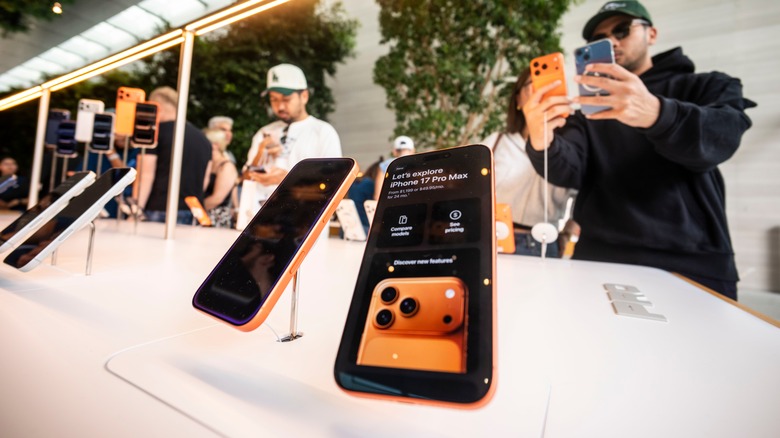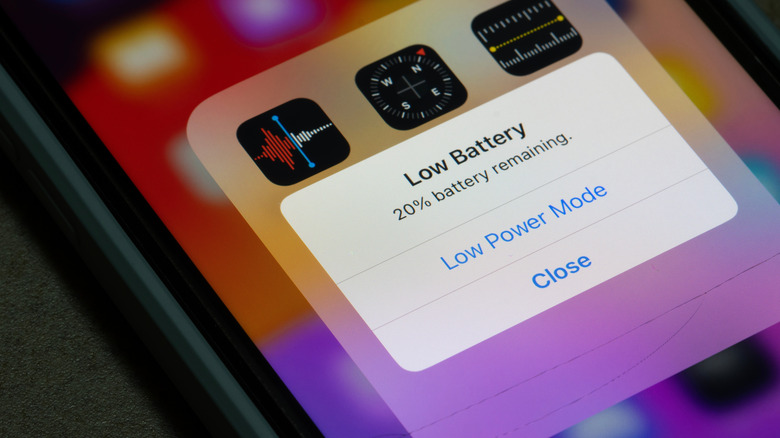New iPhone Tech Might Supercharge Battery Life, And It's Not A Bigger Battery
Battery life has been a key priority for Apple in recent years, and the iPhone 17 series is proof of that. Battery tests have shown the iPhone 17 Pro Max offers better battery life than its main rivals, and that the iPhone Air can last for a day despite its ultra-thin profile. Apple is expected to improve battery life in future iPhone models, but it won't do it by only raising battery capacity. A report from Korean ETNews says Apple is currently developing a new smartphone display technology that could help it boost battery life in future iPhone models or maintain great battery life while introducing other power-hungry features, like more on-device AI capabilities.
The new display tech is called High Mobility Oxide (HMO), and it's supposed to replace the current high-resolution, high refresh rate, low-temperature polycrystalline silicon oxide (LTPO) panels Apple is using in its iPhones. First used on the Apple Watch 4 in 2018 and introduced in 2022 on the iPhone 14 Pro models, LTPO is a technology that allows Apple to offer dynamic 1-120Hz refresh rates (ProMotion) on smartphones. LTPO benefits battery life compared to its predecessor (LTPS), as it allows Apple to support those low refresh rates for specific content.
A display expert told ETNews that HMO tech is relatively new, with scientists having started to pay attention to it in the past few years. LTPO, which Apple helped create, remains dominant in the small and medium-sized OLED market. But if Apple throws its weight behind HMO and delivers a more sophisticated technology, the industry landscape might change. Apple applied for the first LTPO patent in 2014, years before the technology became available in commercial products.
What can HMO do for the iPhone?
ETNews explains that Apple's HMO display tech concerns the thin-film transistor (TFT) layer that drives current to the pixels that form an OLED panel. Apple wants to improve electron mobility in HMO TFTs, which is the weak point of oxide TFTs, a type of display TFT used in some products. Oxide TFTs are already power-efficient, but they do not support higher electron mobility, which is needed for high resolution and high refresh rate displays.
An HMO OLED display could help the iPhone conserve battery life without impacting image quality, whether it's brightness, resolution, or high refresh rates. Apple could then increase battery life in iPhones without increasing the battery capacity. Alternatively, Apple could use the energy savings to power novel features. Another advantage of HMO is that it's cheaper to mass-produce than LTPO screens. This could help Apple mitigate the rising manufacturing costs of future iPhone generations, as other key iPhone components get more expensive.
Very old news. Yes the panels coming from Samsung's new fab in 2026 will be high mobility oxide.
— Ross Young (@DSCCRoss) November 13, 2025
Apple is reportedly in talks with Korean display vendors to manufacture HMO screens. ETNews doesn't name the companies, but these are probably Samsung Display and LG Display, which already manufacture screens for the iPhone and other Apple products. It's unclear when Apple will use HMO screens in the iPhone, but HMO manufacturing might start as soon as next year. That detail comes from display expert Ross Young, who confirmed the benefits of HMO panels on X, reacting to the ETNews report. He said HMO tech is "very old news," and that Samsung will produce HMO displays for the IT sector as soon as next year.

